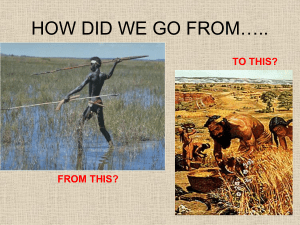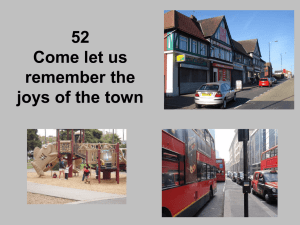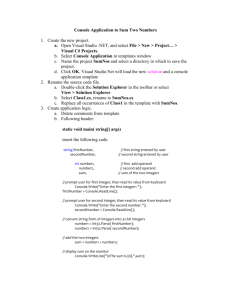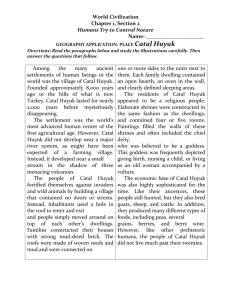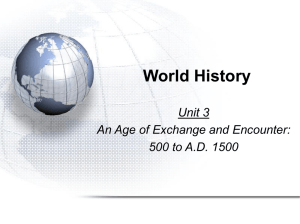AGRICULTURAL REVOLUTION
advertisement
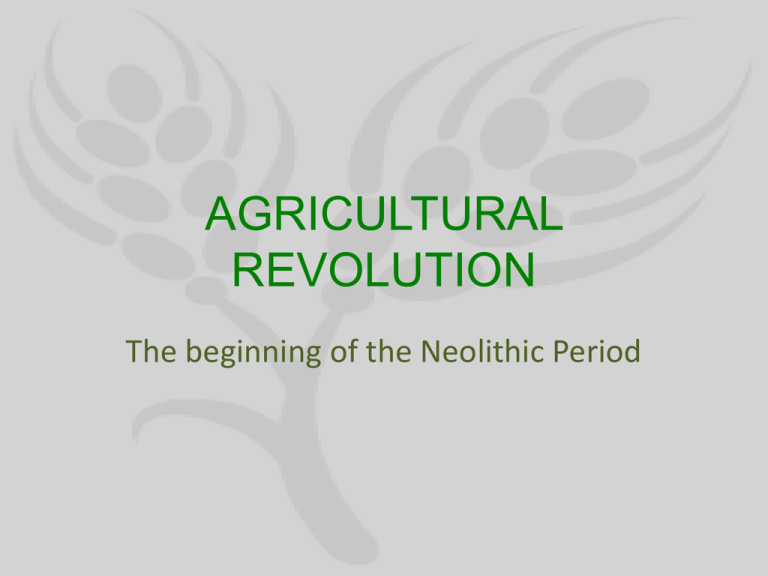
AGRICULTURAL
REVOLUTION
The beginning of the Neolithic Period
climate
change
+ overpopulati = agriculture
on
Why did agriculture begin? – video
5:25
https://school.bighistoryproject.com/pages/console/?clientkey=54423 units/{FF731660-7DED-43E1-9D12-C7F4D8D3C95C}
Why did agriculture begin?
---causes--• Overpopulation People had moved all over
world, so there was nowhere else
to migrate to when resources
gone.
Why did agriculture begin?
- causes – (cont’d)
Climate Change Climate was warming up, so
resources became more abundant
We are currently in an interglacial
period
Why did agriculture begin?
- causes – (cont’d)
Sedentary
people stayed in one place
because of
abundant resources
Population grew no longer had to carry
children with them as
nomads
Increased populations
led to need for more
resources
Need for more resources led to beginning of
agriculture (farming
and domestication of
animals)
Stop and think
What do people need in order to farm?
Video – beginning to
3:25https://school.bighistoryproject.com/pages/console/?clientkey=54423 units/{FF731660-7DED-43E1-9D12-C7F4D8D3C95C}
Effects of Agriculture – Technolog
y
Water needs
developed irrigation
systems (ways to redirect
water)
Need to prepare
the soil
plow was developedeventually large animals
pulled plows
Stop and think
What happens when people produce more food
than they need?
Effects of Agriculture – Economic
Surplus
amount of something left over when
requirements are met
Barter
people would trade their surplus for
things they needed
Stop and think
How might your lifestyle change if you begin to
trade?
Video – 3:25- 7:20
https://school.bighistoryproject.com/pages/console/?clientkey=54423 units/{FF731660-7DED-43E1-9D12-C7F4D8D3C95C}
Social
Effects of Agriculture –
Other roles if surplus, not everyone has to farm
Division of
labor
people worked at jobs
according to their ability
Need for
organization
leads to leadership roles
Social classes
highest classes were rulers and
priests (social hierarchy)
Ruling Class
Farmers and
peasants
Slaves
Jericho
Early Towns
located in the West Bank region of
the Middle East, is the oldest
continuously inhabited
city on the planet.
plentiful water
important trade town
wall built around town for defense
Remains of Walls of Jericho
Early Towns (cont’d)
Catal Huyu k
what is now Turkey
plentiful water
traded obsidian
homes formed walls for defense
Catal Huyuk
Eventually towns expanded and
became cities, and cities became
large-scale civilizations.
